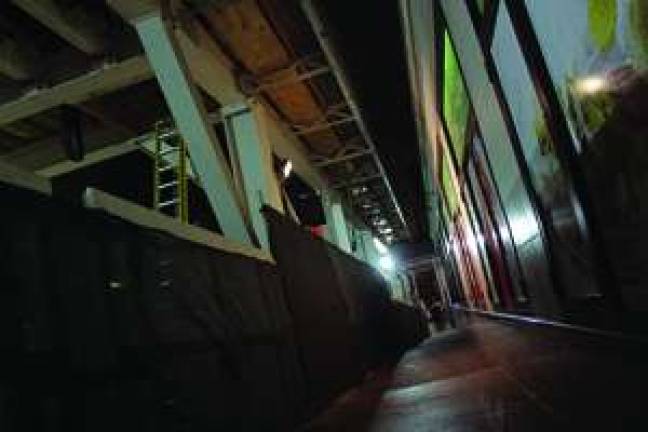Residents Call Subway Construction Breeding Ground for Crime

But police statistics showa decrease aroundSecond Avenue By Amanda Woods Following the recent report of a young woman who was stabbed in broad daylight on East 86th Street near Second Avenue, some Upper East Side residents and business owners are concerned that the ongoing subway construction makes the avenue more dangerous and prone to violent outbreaks. Crime within the 19th Precinct, which covers the neighborhood, has climbed 16.22 percent from this time last year and 7.72 percent over the past two years, according to the most recent CompStat report. But Nick Viest, president of the 19th Precinct Community Council, said that crime has actually decreased 40 percent on Second Avenue between 80th and 91st streets, compared to this time last year. These stats don't prevent concerns from pouring in. Viest noted that residents at 19th Precinct Community Council meetings have pointed out that the construction area could be a breeding ground for crime. Those concerns carry over from the meeting room into the neighborhood's streets. Some blame the scaffolding and fencing surrounding the construction-in some spots covered with green tarps-for tightening up and darkening the sidewalks, potentially hindering the police's view of the goings-on along the Avenue. "What do you see when you look outside?" asked Dimitrios Kontakos, the manager of Viand Coffee Shop on the corner of Second Avenue and 86th Street, whose storefront is completely hidden on one side by the construction's fencing. "Can you see anything? They put a jail over here." Kontakos suggested that some of the scaffolding and fencing should be removed at night, when construction is not going on, because a wide-open view of the sidewalk may deter criminals. "Thugs and thieves and criminals don't like to be exposed," he said. The recent stabbing, which occurred in broad daylight, led Kontakos to worry about what could happen in the middle of the night when people are not around to help. "This is the first time I've seen somebody at 10:30 in the morning outside of the store doing this," Kontakos said. "Imagine if nobody was around and the store was closed. [The woman] wouldn't be alive." Frank Giambanco, owner of Midnight Blue, an Italian restaurant on Second Avenue between 85th and 86th streets, shares the same concerns. "It's pretty dark here because of the closure," Giambanco said. "It's pretty unsafe for women." Vincent Naval, manager of Ivory Cleaners Too, between 84th and 85th streets on the Avenue, also thinks the construction is inviting for criminals. "Two people can't pass at the same time," Naval said. "It's easy for them to do these kinds of things," he added, making a stabbing motion with his hand. Saxs Sexigs, who has lived on the Upper East Side for over 30 years, said that although the subway construction isn't completely to blame for crime in the area, it holds some of the responsibility. "There wasn't that high a crime rate before they started," Sexigs said. "These streets are so narrow and all these people have to walk on one side." Some residents are concerned that the Avenue is becoming a haven for the homeless, who camp out in enclosed areas on the street, shielded by scaffolding. Many of them don't appear to be threatening, including one who calmly sits with his dog and a newspaper, Sexigs said. But Naval said that two or three homeless people sleep in front of his store every night, and he called the police on one of them a few months ago, a man who repeatedly cut his wrist and threatened passersby. Naval said he hasn't seen the man since his call. Bob, an Upper East Sider who declined to give his last name, said he doesn't think the subway construction has any relationship to crime in the area, and that other factors are to blame. "I think the neighborhood changed since they brought in Best Buy and bigger chain stores," he said. "More people bring the crime element as well." Viest said that the significant decrease in crime along the stretch of the Avenue affected by the construction indicates that crime in the area is probably not related to the project. Of greatest concern in the 19th Precinct is the increase in grand larcenies-property crimes, including iPhone thefts-which have climbed 22.4 percent in the precinct over the past year, Viest said. "When those numbers move, that tends to be the most significant in affecting the overall crime," Viest said. "It's the largest number. We've seen an [increase], but it's also the most difficult crime to police because it's a crime of opportunity. There tend to be gangs and groups that coordinate and do these things." Police are urging locals not to hold their phones in public, but other than that, the crimes are hard to prevent, Viest said. Julia Csiki, a waitress at André's Cafe, located on Second Avenue between 84th and 85th streets, and Mary Charlotin, who also works in the area, said they feel relatively safe and have seen more police patrolling the area since the subway construction began. But Anima Golder, a Second Avenue fruit stand operator, said that she doesn't see the neighborhood, once known for its relative safety, the same way anymore. "There's more crime," she said. "This area is bad now."